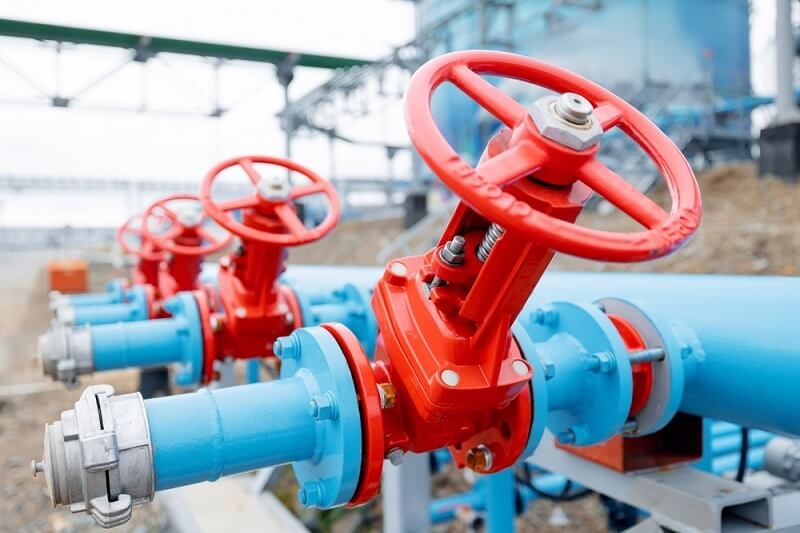
Farming is good work, but it is not risk-free. One of the largest risks is fire. Each year, farms in the nation burn up in massive fires that blaze intensely and reduce structures, animals, machinery, and produce to ashes. While some fires cannot be helped, many can be avoided if one is careful and plans ahead.
This is a guide to fire safety on farms. We'll walk you through valuable steps to minimize the risk of a fire.
There are all kinds of flammable materials to be found on farms—dry hay, fuel, grain dust, chemicals, and electrical wiring. When fires do happen, they spread fast because of the wind, open buildings, and explosive storage.
Most barn fires result from electrical safety hazards in barns, careless smoking, or excessive hay and fuel storage in close proximity. Fortunately, the majority of the fires can be avoided with good practice and a few inexpensive devices.
The best and first thing that you can do is create a farm fire emergency plan. It is a written document stating how to behave if there is a fire. It keeps everyone calm and acting quickly.
Your plan must contain:
Post this plan in conspicuous locations throughout your property—particularly in barns, shops, and primary homes. Read it to staff, family, and visitors. Rehearse it once or twice a year, just as a school fire drill.
Properties with an effective fire plan are more likely to respond quickly and save lives and property.

Placing fire extinguishers on your farm is not enough—you must position them in spots where they are accessible to be used when seconds matter. Proper placement of fire extinguishers saves the day if a fire begins.
Here are some easy rules:
Additionally, inspect your extinguishers frequently to confirm that they are still charged and not past their expiration dates. Replace them if they appear damaged or hollow-sounding.
The safest means of fire risk reduction is proper storage of flammable or combustible materials. Some of the most common hazardous materials are hay, gasoline, diesel, paint, oil, and fertilizers.
Store combustible materials in accordance with these guidelines to make your farm safe:
Barns are probably the most susceptible element of a farm to fires. Utilize a barn fireproofing checklist and inspect your buildings, searching for possible dangers. You don't require high-tech gear, but a basic checklist can motivate you to inspect the most important areas periodically.
Add the following to your barn fireproofing checklist:
Fix any issue that you notice at once. A minor problem like a damaged cord can result in a gigantic fire if not fixed.
The electrical wiring is the biggest reason for barn fires. There have been barns constructed decades earlier and never went through electrical updates. Give maximum attention to electrical safety in barns to ensure no sparks and overheating.
Some basic tips regarding electrical safety:
Farm machinery such as tractors, combines, and generators can overheat or leak fuel. An out-of-commission machine can catch fire simply by running too long or by pouring oil onto a hot surface.
To lower this danger:
Never allow hot machinery to be left in livestock barns or in stored feed. Allow machinery to sit and cool, and keep fuel in separate, well-ventilated locations.
When there are droughts and dry spells, fire hazards increase. Warm temperatures can ignite fields, brush, and barns. Consult local fire hazard ratings, and avoid burning brush, trash, or weeds when the hazard rating is high.
If you reside in a region that is susceptible to fires, create a firebreak around your farm. This is a grassless belt of land surrounding fields or structures that halts fire from flaring up. Mow grass low, trim dead trees, and clear between homes as much as possible.
Also, water hoses, buckets, and portable water tanks should be ready. Although a fire truck may take some time to reach your place, you may be able to extinguish small fires until assistance shows up.
All individuals who work or reside on your farm must know basic fire safety practices. Take them through the farm emergency fire procedure, show them proper placement of fire extinguishers, and show them where flammable liquids are stored.
Include this fire safety training in:
Train employees not to smoke around barns or fuel storage, and not to dispose of burning objects such as welders or torches on the ground.
The more your crew knows what to do, the quicker they can act and avoid disaster.
Farms change—new buildings go up, storage pads move, and equipment is upgraded. And that means your fire protection plan needs to change, too.
Every year, walk your property and review:
Regularly updating your fire safety on farms allows you to be prepared at all times.
Fire safety should not be a panic on the farm. You can reduce the chances of fire and protect your farm, farm animals, and home with a good plan, quality equipment, and some good habits.
By taking just a few minutes of your time to prepare these steps now, you could save yourself considerable grief later. Fire is not safe, but with your preparation, your farm can be safe, productive, and healthy.
This content was created by AI